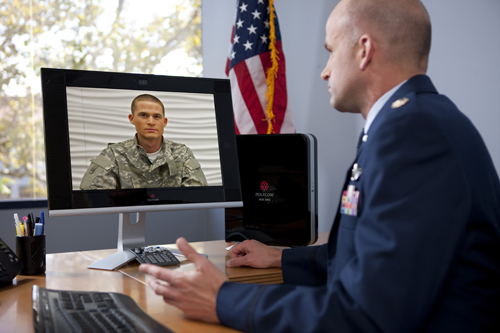As businesses shift to a virtual workforce, it becomes more critical that leaders effectively connect with their teams. We’ve replaced our 3-dimensional interactions with the 2-dimensional interactions of video conferences and calls. Mechanisms for connections that happened naturally and organically around the water cooler won’t work with a remote workforce. Therefore, if we are going to be a Locked on Leader, we need to be purposeful in how we connect with each and every member of your team.
How to Stay Connected with Your Team
The good news is we don’t need to create new techniques, we just need to apply them under different circumstances. Here are some guidelines to help you stay connected.
- Allocate time for personal check ins at the start of a meeting – When we were all working at the same office, this would happen naturally. Since we had to walk to the meeting location, we typically left early enough to allow for casual conversations en route. People would start arriving up to 15 minutes early so as not to be late for the meeting. As team members entered into the conference room or office where the meeting was to be held, they would naturally engage in small talk and bonding would occur. We tend to act differently with video conferences, joining at the last minute. Schedule five or so minutes (depending on the number of employees) to allow members to check in. Have everyone share something good that is going on in their life with the rest of the team. This will solidify their sense of belonging.
- Continue to “walk the floor” – As a Locked on Leader, you probably walk the floor several times a day. Whether it is a manufacturing floor, sales floor, or gopher farm, walking around and checking in with team members is probably second nature. With a virtual workforce, you may feel out of sorts but you have to continue this practice. Using Skype, Hangouts, Facetime (for iOS to iOS), Messenger, or anyone of many other applications you can initiate a video call with your remote workers. Make sure they know you are there for them. By doing this, you will be able to head off any problems and reinforce the sense of safety and security.
- This is the time to be empathetic. Most people aren’t used to working from home. I’ve been doing for 5-years and it is the norm for me but there are new distractions and people have to learn to manage them. Remember, historically your team members’ homes have been a place of refuge from work. It’s where they interact with family, friends, and loved ones. They no longer have the commute to get their mind in the work mindset. You are probably going through the same thing so make sure you share your challenges and work with your team to adapt to the new reality.
- Set your team up for success – this isn’t anything new but it does look different. Not everyone will have the required technology to work from home. Computers are easy, the ones at the office will just be gathering dust, but what about connectivity? Not everyone will have the bandwidth needed and some lower skilled workers may not have any internet access. In addition, your team member may not be the only person who needs to work from home and space may be limited.
Remember, everyone is feeling uncertainty about the future. If they feel left alone, they will revert to looking out for themselves. You need to solidify your sense of community and reinforce everyone’s value to the team.










